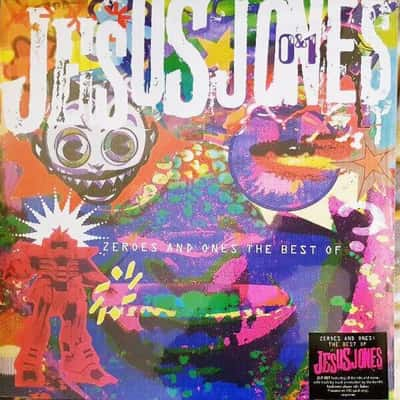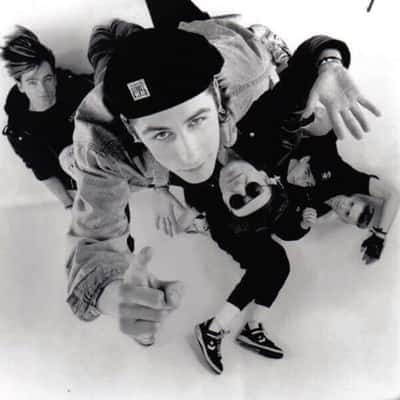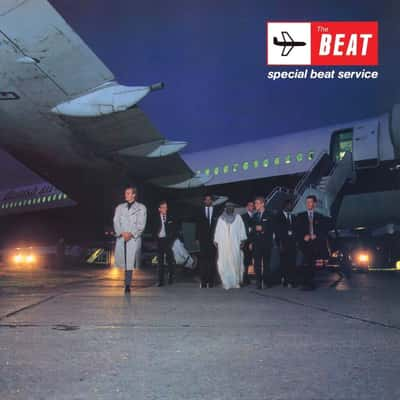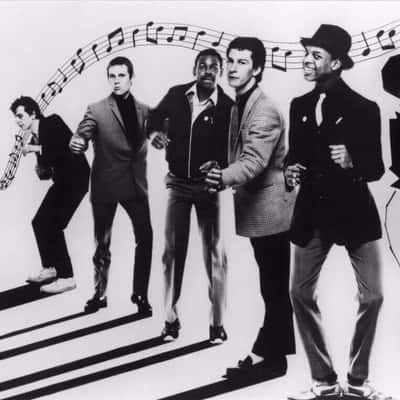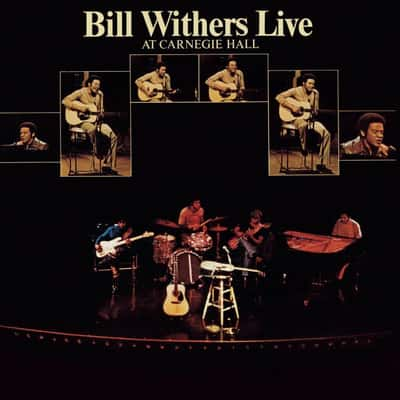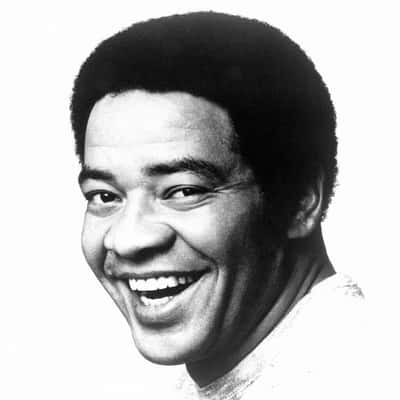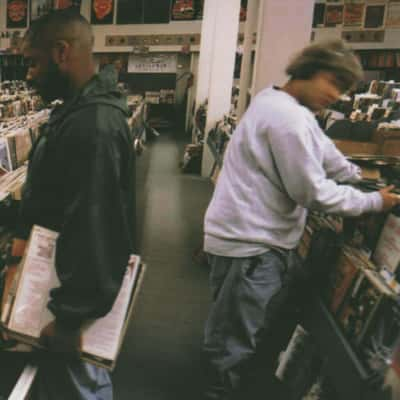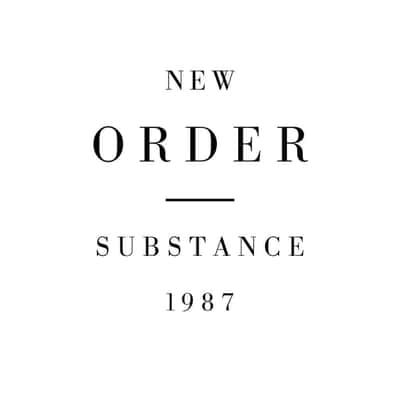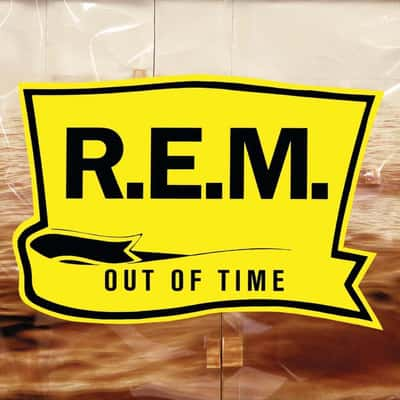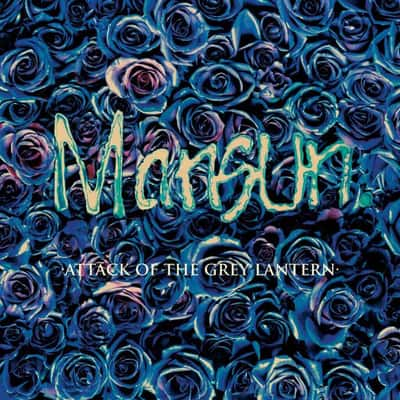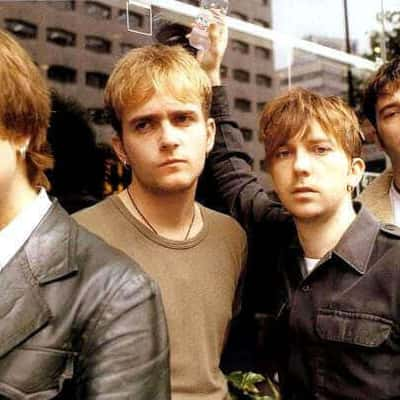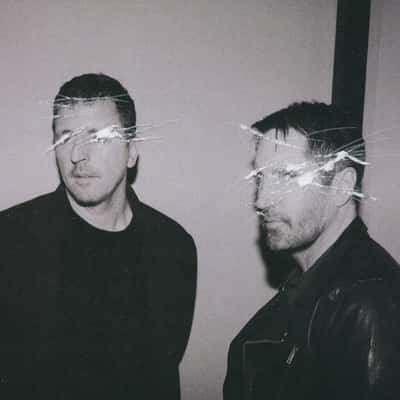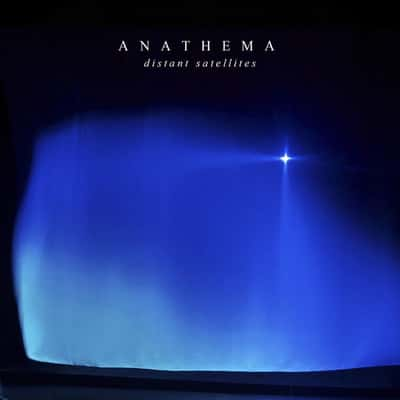
Musical Journey from Daft Punk to Bill Withers: Diverse Legends Unite
Zeroes And Ones - The Best Of by Jesus Jones 🎶
The Sound of a New Era 🎧
Jesus Jones emerged from the late 80s British alternative scene, blending post-punk, techno, and pop in a distinctive sound that defined the early 90s. Zeroes And Ones, released in 1993, encapsulates the bands sonic evolution with its catchy hooks and innovative use of technology. The album showcases the band’s signature style, characterized by layered synthesizers and punchy guitar riffs, which resonated strongly with the burgeoning rave culture of the time. Songs like Real, Real, Real and Right Here, Right Now not only found their place on club playlists but also captured the zeitgeist of an era marked by a fusion of genres. 🎤
Recording Journey and Innovations 🎚️
Recordings for Zeroes And Ones took place at the Battery Studios in London, a haven for both established acts and emerging talents. What set this project apart was the bands pioneering use of digital recording techniques. The synthesis of live instrumentation with computer-generated sounds was relatively new at the time, allowing them to push boundaries and create a unique soundscape. The bands commitment to exploring the technological advances of the day brought a refreshing twist, demonstrated through tracks like International Bright Young Thing, which features an infectious blend of sampled beats and jangly guitars. 🎶
Cultural Impact and Reception 🌍
Upon its release, the album received a warm reception, with tracks like Right Here, Right Now becoming anthems of the 1992 political landscape, resonating with themes of global consciousness. The song, a call for social change, gained immense popularity and was later featured in numerous commercials and films, solidifying its place in pop culture. Fans appreciated not just the catchy sound, but the message behind the music. The albums vibrant production and relevant themes positioned Jesus Jones as a voice of a generation eager for change—making it a sonic touchstone of the early 90s.
Legacy and Influence 🏆
As music evolved, so did the influences on Jesus Jones. While the bands momentum slowed after their initial success, Zeroes And Ones left an indelible mark on future artists. Groups like The Chemical Brothers and Fatboy Slim drew inspiration from the innovative sound and production techniques Jesus Jones employed, blending rock with electronic music. Moreover, the lyrical themes surrounding global awareness and the human condition found echoes in the work of later bands spanning various genres, proving the timeless relevance of their message.
Personal Stories from the Band 🎤
Jesse Jones, the band’s frontman, often recounts how their compositions were born out of both political unrest and personal reflections on society—his lyrics serving as both critique and celebration of modern life. For instance, the stories behind the songs, like “Zeroes and Ones,” reflect his own experiences navigating the complexities of the digital age, which resonates even stronger today. As technology continues to advance, the foresight embedded in their music feels prophetic, proving that artists like Jesus Jones were ahead of their time.
Connective Threads to the Present 🎉
Today, Zeroes And Ones stands as a reminder of the lasting power of music to inspire and provoke thought. Its blend of genres laid the groundwork for the diverse sounds of contemporary music. As nostalgia hits, DJs integrate its tracks into modern playlists, bridging the gap between past and present. Moreover, discussions around the impact of social media echo the sentiments found in their lyrics—highlighting the cyclical nature of cultural dialogues.
In conclusion, Zeroes And Ones - The Best Of by Jesus Jones is more than just a compilation; it’s an exploration of a transformative period in music that continues to influence artists and audiences alike. The album’s blend of technology, message, and innovative soundcrafting makes it a must-listen for anyone interested in the evolution of music. 🚀
Special Beat Service by The Beat 🎶
A Musical Voyage 🌊
In 1980, The Beat (known as The English Beat in the U.S.) released Special Beat Service, an album that marries ska, reggae, punk, and pop into an infectious blend that captures the essence of the era. The band, hailing from Birmingham, UK, positioned themselves at the forefront of the two-tone movement and enriched it with their eclectic influences. This was not just another album; it was a vibrant celebration of multicultural soundscapes that painted a rich tapestry, reflecting the diverse music scene of the late 1970s and early 1980s.
Behind the Scenes 🎤
Special Beat Service was recorded at The Town House and Utopia Studios in London, where the band experimented with different production techniques. Producer Ellen Foley infused innovation into the project, ensuring the album resonated with layers and textures that were less common in traditional ska records. The unique recording conditions contributed to the albums distinct sound; the musicians often worked late into the night, which birthed some of the most memorable tracks, including “I Confess” and “Save It for Later.” The atmosphere was electric, fueled by the band’s youthful exuberance and a desire to push the boundaries of their sound.
Chart-Topping Success 📈
Upon its release, Special Beat Service achieved commercial success, reaching the Top 10 in the UK Albums Chart. The infectious singles “Save It for Later” and “I Confess” propelled the album into the mainstream, showcasing their catchy hooks and thoughtful lyrics. Save It for Later, in particular, remains a fan favorite, known for its engaging melody and profound commentary on life and love, which resonates even today. The album added to the momentum of the 2 Tone genre, influencing a slew of upcoming artists, from No Doubt to Gwen Stefani, who later drew inspiration from The Beat’s style and upbeat energy.
Cultural Context 🌍
Released during a time of significant cultural and political change in the UK, Special Beat Service resonated with listeners who were grappling with the social upheaval of the era. The bands lyrics often reflected themes of social consciousness, unity, and hope, encapsulating the spirit of the working-class youth. The album stands as a powerful reminder of how music can mirror societys challenges and triumphs. In a time of rising tensions, The Beats appeal transcended mere entertainment; they fostered a sense of belonging and made statements about love, resistance, and resilience.
Legacy and Influence 🏆
The legacy of Special Beat Service endures to this day, influencing both musicians and fans alike. The albums blend of styles and thoughtful lyrical content paved the way for future genres such as ska-punk and indie rock. Notably, its impact can be traced in artists like The Mighty Mighty Bosstones and Reel Big Fish, who incorporate ska elements in their music. The album has aged like fine wine; new generations continue to discover the timeless grooves and messages that make The Beats music relevant long after the gnarled streets of Birmingham echoed their early notes.
A Loving Tribute ❤️
As we revisit Special Beat Service, it’s essential to recognize not only its musical achievements but also the joy it evokes in fans and listeners. The Beat distinguished themselves with an infectious energy and lyrical depth that asked the world to listen. Celebrated for their live performances, the band captured audiences hearts, and their songs often turn into anthems of liberation and love—reminding us of the powerful role music plays in our lives.
The journey through Special Beat Service is more than just an exploration of sound; it’s a reflection of an era and a reminder of music’s power to connect, inspire, and bring forth change.
Live At Carnegie Hall by Bill Withers 🎤
A Night to Remember 🌟
Bill Withers Live At Carnegie Hall is not just an album; it is a vibrant encapsulation of a moment, a dialogue between the musician and his audience that transcends time. Recorded in 1973, this live performance showcases Withers in his prime, blending heartfelt emotion with masterful musicianship. The meticulously selected venue, renowned for its acoustics and prestigious aura, served as the perfect backdrop for Withers’ soulful sound. This concert was not an ordinary live recording; it was a celebration of community, love, and the universal human experience.
The Sonic Landscape 🎶
The album presents a unique sonic landscape that highlights Withers powerful yet smooth vocals, complemented by a dynamic band. With tracks like Aint No Sunshine and Lean On Me, the elation and sorrow are palpable; listeners can almost feel the warmth of the audiences energy resonating through the speakers. Whats particularly interesting is the seamless blending of musical styles—jazz, funk, and folk intertwine to create a sound that feels both timeless and fresh. Each track is punctuated by Withers’ storytelling, drawing listeners into the narrative of his life experiences.
Behind the Scenes 🎥
Many may not know that the recording of this album was a labor of love. Withers insisted on preserving the genuine reactions of the audience, allowing their joy and excitement to colour the album. This approach contrasts sharply with the overly polished productions of the time, grounding the music in a reality that listeners can connect with. Moreover, Withers famously integrated spontaneous moments—like audience sing-alongs—that reflect the communal spirit of the 1970s, an era moving towards self-exploration and connection through music.
Cultural Resonance 🌍
Live At Carnegie Hall carries significant cultural weight, embodying the essence of the civil rights movement. Withers’ messages of unity, support, and perseverance mirrored the sentiments of an America yearning for change. Songs like Lean On Me became anthems that inspired generations, promoting the belief that mutual support can carry people through the toughest of times. The way Withers addressed themes of love, brotherhood, and resilience makes the album relevant even today, as society continues to grapple with similar issues.
Legacy and Influence 🏆
The legacy of Live At Carnegie Hall resonates far beyond its initial release. It not only solidified Withers place in the pantheon of soul and R&B legends but also influenced a myriad of artists across genres. Modern musicians, from pop to hip-hop, cite Withers raw authenticity as a catalyst for their own artistic expressions. Tracks from this album continue to be covered and sampled, proving that Withers simple yet profound message remains timeless. The influential song Lean On Me alone has seen countless renditions, attesting to its undying impact on music and culture.
In summary, Live At Carnegie Hall is more than just an album—its a piece of musical history, a narrative of love, and a testament to the power of community. Bill Withers captured the spirit of his time, paving the way for future generations of artists to express vulnerability through music in a way that becomes a balm for the human soul.
- View Bill Withers on russ.fm
Endtroducing… by DJ Shadow 🎧
The Shadowy Beginnings 🌌
Endtroducing… marks an extraordinary debut for DJ Shadow, aka Joshua Davis. Released in 1996, the album stands as a timeless artifact of the instrumental hip-hop genre, a blend of moody beats, mesmerizing samples, and intricate layering that redefined the way music could be created. Shockingly, it is famously noted for being the first album entirely made from samples, captured from various sources ranging from obscure vinyl records to film soundtracks. This innovative approach not only showcased DJ Shadow’s exceptional talent but also set a precedent for a new generation of music producers.
A Unique Recording Oasis 🎤
The genesis of Endtroducing… unfolded within the confines of a small garage studio in California. DJ Shadow utilized a minimal setup, with just a turntable, a sampler, and an array of eclectic records that ranged from funk to jazz. The creative process was fraught with experimentation, as he sought to create a sonic collage that would reflect his diverse musical influences. The seemingly chaotic array of sounds coalesced into the lush landscapes found on tracks like “Building Steam with a Grain of Salt” and “Midnight in a Perfect World,” often drawing listeners into a captivating audio journey.
Cultural Context and Resonance 🌍
Released during the rise of alternative rap, Endtroducing… resonates deeply within its time, capturing the essence of ’90s hip-hops adventurous spirit. In an era dominated by sampling, DJ Shadow’s mastery transcended simple cut-and-paste techniques, as he wielded samples like an artist painting on a canvas. The album provided a platform for introspection amidst a rapidly changing socio-political landscape, showcasing the struggles and nuances of inner-city life while bridging gaps across genres. The haunting soundscapes evoke imagery of urban alienation and exploration, merging seamlessly with the cultural zeitgeist of the time.
The Fan Reception and Lasting Legacy 🏆
Upon its release, Endtroducing… was met with critical acclaim, hailed as one of the best albums of the 1990s. Fans embraced its intricate production and lyrical depth, elevating DJ Shadow to iconic status. Tracks like “Organ Donor” became staples within DJ sets, influencing countless artists across various genres. Over the years, the album has amassed considerable acclaim, frequently appearing on numerous greatest albums of all time lists. Its legacy lives on, with artists like Flying Lotus, J Dilla, and A Tribe Called Quest citing shadow as a pivotal influence in their work.
Innovations in Sound 🌟
Beyond the albums profound impact on hip-hop, what makes Endtroducing… truly remarkable is the innovation in sound design. DJ Shadow pioneered what would later come to be known as “sample-based music,” seamlessly blending textures and rhythms to create a cohesive sound that was both innovative and evocative. The meticulous layering of samples not only showcased DJ Shadow’s technical prowess, but also highlighted a new avenue for producers, encouraging them to explore their creative boundaries. This artistic exploration has encouraged subsequent artists to deconstruct traditional song structures in favor of creating evocative soundscapes, enriching the music landscape.
The Current Influence and Modern Context 📈
In todays digital age, where sampling is omnipresent, DJ Shadows Endtroducing… can be seen as a foundational pillar for the genre. Its relevance persists, influencing not only musicians but also creators across multimedia platforms, showcasing the power of sampling. As contemporary artists experiment with sound fusion, the roots laid by DJ Shadow resonate in various forms – from lo-fi hip-hop playlists to avant-garde electronic music. The albums continued presence in popular culture, from documentaries to viral TikTok sounds, speaks to its extraordinary impact and universality.
In conclusion, Endtroducing… by DJ Shadow is not merely an album; it’s a landmark in the evolution of music. Through its innovative use of sampling, haunting melodies, and profound cultural commentary, it carved out a space that has forever altered the musical landscape, inviting listeners to explore the depths of sound in ways never before imagined.
Discovery by Daft Punk 🚀
A Sonic Voyage 🎶
Released in 2001, Discovery, Daft Punks sophomore album, represents a daring leap into the realm of electronic music. Blending house, disco, and funk, the duo—Thomas Bangalter and Guy-Manuel de Homem-Christo—crafted a sound that is both futuristic and nostalgic. The albums creation followed a profound reflection on the duos own sonic identity and influences, making it a transformative work in their discography.
The album was recorded over a period of more than two years in their home studio in Paris, employing an array of vintage equipment. The use of analog synthesizers and drum machines played a crucial role in generating its distinctive sound. By embracing both digital and analog methods, Daft Punk managed to blur the lines between genres and eras, creating a rich, textured auditory experience. 🌌
The Cultural Context 🌍
Discovery emerged at a time when electronic music was beginning to gain widespread attention but was still often dismissed by mainstream audiences. The early 2000s milieu was ripe for innovation, with the rise of the internet fostering underground movements. Tracks like One More Time and Digital Love captivated audiences and helped usher in a new wave of dance music that appealed to both clubs and radio listeners alike.
Moreover, Discovery connected with broader cultural themes, such as the exploration of identity and the fusion of man and machine. The albums art—featuring striking, geometric visuals—underscored the duos vision of a digital future, where human emotion intertwines with technology. This connection is evident in the albums narrative, which follows characters on a quest for connection in an increasingly alienating world. 🎭
Iconic Tracks and Their Impact 💥
The standout single, One More Time, is perhaps the epitome of the albums ethos—inviting listeners to celebrate the joy of dance and music. With its infectious groove and euphoric lyrics, it became a global anthem, significantly influencing the dance music landscape. Similarly, Harder, Better, Faster, Stronger showcased Daft Punks innovative sampling techniques, which would later be revitalized by artists like Kanye West in Stronger, demonstrating the duos lasting influence on popular music. 🎤
Visual Storytelling: Interstella 5555 🌌
In 2003, the animated film Interstella 5555: The 5tory of the 5ecret 5tar 5ystem was released, creating a unique synergy between music and visuals. Directed by Leiji Matsumoto, it presented a visual narrative for Discovery, elevating the albums themes and music to a cosmic level. This masterpiece solidified Daft Punks status as pioneers not just in music but in multimedia art.
A Lasting Legacy 🕰️
Discovery is often regarded as one of the finest albums of the 21st century, earning accolades from critics and fans alike. Its fusion of genres paved the way for a renaissance in electronic music, inspiring countless artists across diverse genres. The albums influence can still be felt today, as newer generations of musicians draw inspiration from its rich soundscape.
In retrospect, Daft Punks Discovery is more than just a collection of tracks; it represents a pivotal moment in music history, cementing the duos legacy as innovators and visionaries. The albums captivating blend of infectious melodies, innovative production, and cultural resonance continues to resonate, proving that music can transcend time and space. 🌠
- View Daft Punk on russ.fm
Substance by New Order 💿
Recording Journey 🎵
Substance, released in 1987, marked a significant moment in the evolution of New Order, a band that emerged from the ashes of Joy Division. This album is a compilation that features iconic singles from their early years alongside some new tracks, capturing the essence of their synthesis of post-punk and synth-pop. The compilation showcases not only the band’s knack for crafting infectious melodies but also their groundbreaking approach to blending electronic music with rock, a testament to their innovative spirit during the mid-80s.
The recording process for Substance was notable for its eclectic use of technology and soundscapes. The band embraced the then-nascent digital technology, employing sequencers and synthesizers that were groundbreaking at the time. The result? A rich tapestry of sounds that redefined the boundaries of pop music. The track Blue Monday, which became an iconic classic, was particularly revolutionary due to its use of the Oberheim DMX drum machine, leading to a whole new genre of electronic dance music. 🕺
Cultural Impact 🌍
Substance arrived during a pivotal time in music history—when the post-punk movement was evolving and the electronic scene was beginning to gain traction. The album not only captivated fans in the UK but also laid the groundwork for the burgeoning rave culture of the late 80s and 90s. New Orders blend of emotive songwriting and infectious dance beats resonated with a generation yearning for innovative soundscapes.
The influence of Substance can be seen today in various genres, most notably in electronic dance and indie pop. Artists from the likes of Radiohead to Daft Punk carry a lineage that can be traced back to the experimental nature of New Order. Even the contemporary synthwave movement draws heavily from the melodic structures and production techniques pioneered by the band. Their sound has proven to be timeless, echoing through the decades and consistently inspiring new generations of musicians. 🌌
Legacy and Influence 🏆
The legacy of Substance is one of both commercial and critical acclaim. Not only did it achieve substantial sales, but it also introduced the world to a new sound—one that effortlessly blended melancholy lyrics with danceable beats. The albums distinctive artwork, featuring a stark, minimalist aesthetic, has become iconic in its own right, symbolizing the cold yet vibrant nature of the music contained within.
Fans remember Substance not just for its chart-topping tracks but for its role in shaping a cultural identity. The album represents a bridge between disparate genres, drawing punks raw energy into the evolving realm of electronic music. It captures a moment of transformation within the music industry, where boundaries began to blur and new ideas flourished. The continued remixes and reinterpretations of tracks from Substance reflect its lasting impact—a testament to New Orders indelible mark on music history and culture. 🥇
Personal Stories from the Band 💬
During interviews, members of New Order have recounted the creative tensions and exhilarating moments of collaboration that defined the making of Substance. Bernard Sumner, the bands frontman, once shared that the writing process often felt like an experiment; they would try to combine various influences and see what worked. This sense of exploration is palpable in the tracks, each offering a unique glimpse into their artistic journey.
Additionally, the band’s ability to intertwine personal narratives with universal themes resonated with fans on a deep emotional level. They took the rawness of their past experiences, particularly the tragedy of losing frontman Ian Curtis, and transmuted that pain into something vibrant and celebratory through music. The duality of joy and sorrow in their sound continues to connect with listeners today, making Substance not just an album but a part of the soundtrack of a generation. 🌈
In summary, Substance by New Order is far more than a compilation; it is a cultural artifact that captures the spirit of an era while continuing to influence modern music. Its blend of innovation, emotion, and lasting impact ensures that its legacy endures, resonating with audiences both old and new.
Out of Time by R.E.M. ⏳
Recording Journey 🎵
Out of Time, released in 1991, marked a turning point for R.E.M., as it not only solidified their status in the alternative rock scene but also showcased their ability to blend themes of nostalgia and emotional depth. Recorded in the famed Bearsville Studio in Woodstock, New York, the band took a markedly different approach compared to their earlier albums. The band members were inspired by an eclectic mix of influences, including folk, psychedelic, and world music. The addition of strings and horns, most notably in tracks like Shiny Happy People, provided a fresh sonic landscape that captured both joy and melancholy.
The recording sessions were characterized by a sense of experimentation. R.E.M. sought to break out of the conventions of the rock genre. This approach contributed to their unique sound that would later influence countless bands across various genres. Producer Scott Litt played a critical role in guiding the band to embrace melodic arrangements while ensuring that the essence of R.E.M. remained intact. The result was a polished yet authentic sound that peppered the airwaves with tracks that bubbled with lyrical relevance and catchy hooks.
Cultural Impact 🌍
Upon its release, Out of Time resonated deeply within the cultural landscape of the early 90s. This was a period marked by significant sociopolitical change, and R.E.M. tapped into the zeitgeist through introspective lyrics and resonant melodies. The albums lead single, Losing My Religion, became an anthem of unrequited love and self-doubt, propelling the band into mainstream recognition almost overnight. The songs haunting mandolin riff became iconic, pushing the boundaries of what was possible in pop music at the time.
Out of Time also ushered in a new era of alternative rock, paving the way for bands like Radiohead and The Smashing Pumpkins. The albums blend of introspection and accessibility encouraged a generation of musicians to explore deeper themes and embrace vulnerability in their songwriting. It helped to demonstrate that alternative music could occupy a significant space in the mainstream, melding art with commercial success.
Legacy and Influence 🏆
More than three decades later, the influence of Out of Time can still be felt resonating through contemporary music. Songs like Losing My Religion, Shiny Happy People, and Near Wild Heaven are regularly revisited, sampled, and covered, illustrating their enduring quality. Critics and fans alike have often cited this album as a defining moment for R.E.M., with many considering it their masterpiece. The album won a Grammy Award for Best Alternative Music Album and remains a beloved fixture of 90s music.
R.E.M.s willingness to push boundaries did not go unnoticed by their peers, with artists from various genres acknowledging the imprint Out of Time has left on the music industry. It has not only influenced alternative rock but has also seen its spirit echoed in pop, indie, and folk music. The sentimentality captured in these tracks laid the groundwork for more expressive songwriting.
The band’s lyrical depth and emotive melodies serve as a reminder of the power of music to explore the human experience. Even as time marches forward, Out of Time provides a timeless lens through which listeners can reflect on their own complexities, ensuring that the legacy of R.E.M. continues to thrive in the hearts of generations to come.
- View Out of Time on russ.fm
Attack Of The Grey Lantern by Mansun 🌌
A Unique Recording Journey 🚀
Mansuns debut album, Attack of the Grey Lantern, released in 1997, marked a significant moment in Britpop. The bands eclectic sound combined rock, pop, and progressive influences, creating a sonic landscape that set them apart from their contemporaries. Interestingly, the album was recorded at Rockfield Studios in Wales, a place famous for hosting legends like Queen and Oasis. The studio environment allowed Mansun to experiment with varied instrumentation, blending rock with orchestral elements, which reflected their ambition and artistic vision.
The recording process was not without challenges. The band sought perfection, often re-recording parts multiple times, which contributed to the albums polished finish. The innovative track The Chad Who Loved Me features orchestral arrangements and cinematic influences, showcasing their intent to push the boundaries of typical rock compositions. The layered production techniques, combined with drummer Simon Soul Williams intricate rhythms, painted a vivid picture of the bands unique artistic identity.
Cultural Impact and Context 🌍
Upon its release, Attack of the Grey Lantern received critical acclaim, quickly becoming a defining album of the late 90s. It arrived during a time when Britpop dominated the UK music scene, yet Mansuns approach was distinct. Rather than merely riding the Britpop wave, they carved their niche with surreal lyrics and ambitious rock compositions.
This debut resonated with listeners who were seeking depth beyond the gloss of superficial pop. Tracks like Wide Open Space and She Makes My Nose Bleed offered introspective narratives, reflecting the anxieties and complexities of youth in a rapidly changing society. The albums themes of cynicism, love, and regret mirrored a generation grappling with its identity.
The single Wide Open Space became particularly emblematic of the era, its haunting melody capturing the melancholic essence of the time. Interestingly, the song was inspired by lead singer Paul Drapers experiences of growing up in a small town, embodying both personal and collective insecurities.
Legacy and Influence 🏆
Attack of the Grey Lantern has left an indelible mark not just on Mansuns career, but on the broader musical landscape. The albums blend of rock with progressive elements paved the way for future artists, influencing bands that sought to experiment beyond traditional genre constraints.
In particular, the use of elaborate arrangements and introspective lyrics can be traced in the work of later groups like Coldplay and Radiohead, who have similarly woven complex narratives into their music. Additionally, fans still regard Mansuns melodies and lyrical craftsmanship as a precursor to the more elaborate pop-rock songs that followed in the 2000s.
In a wider cultural context, the debuts distinctive artwork—featuring a comic book-style cover—also played a role in shaping album aesthetics during the era. It spoke to a generation that embraced both visual and auditory storytelling, leading to a vibrant interplay of art and music that continues to influence how albums are marketed today.
Mansuns journey didnt end with Attack of the Grey Lantern, but this remarkable debut demonstrated their innovative spirit and willingness to challenge norms. As listeners continue to explore the rich tapestry woven through this album, its legacy endures, reminding us that music, when paired with ambition and creativity, can transcend time. 🎶
The Fragile by Nine Inch Nails 🌌
A Dark and Introspective Odyssey 🎶
Released on September 22, 1999, The Fragile marks a pivotal point in Nine Inch Nails discography and industrial rock as a whole. Spearheaded by Trent Reznor, this double album delves deep into themes of despair, isolation, and the chaotic human condition, encapsulated within a haunting soundscape. Unlike many of the eras albums that relied heavily on overtly aggressive sonics, The Fragile takes a more atmospheric approach, blending electronic elements with rock instrumentation to create a labyrinthine auditory experience. 🎧
But what truly sets The Fragile apart is its narrative arc and emotional complexity. Reznor himself described the album as a “concept album,” albeit one that lacks a linear storyline. Instead, it traverses various emotional terrains, exploring the fragility of the human psyche in a world fraught with turmoil. From the chilling opener Somewhat Damaged to the ethereal closer Underneath It All, listeners experience a jarring yet captivating journey through sound.
Technical Innovations and Challenges 🛠️
Recorded largely in a vintage location: the famed Nothing Studios in New Orleans, The Fragile’ was groundbreaking in its approach to sound engineering. Reznors collaborations with renowned producer Alan Moulder—who contributed significantly to the sonic landscape—led to a breadth of innovations. The album employed sophisticated layering techniques and dynamic shift in tempo, intertwining delicate piano melodies with abrasive guitar riffs and glitch-heavy electronic rhythms.
Notably, the lengthy production process was fraught with challenges. Reznor struggled with substance abuse and the pressure of following up the monumental success of The Downward Spiral. These personal battles became an integral part of the albums evolving artistry and raw emotional power. During recording, Reznor famously noted, “I had to figure out how to live with what I felt instead of decribing it,” which translated into a raw authenticity that defines the listeners experience.
Cultural Context and Influence 🌍
Upon its release, The Fragile was met with mixed reviews, a stark contrast to its predecessor. Critics were taken aback by its contrasting serene and chaotic elements. Yet, as time went by, its significance became increasingly evident. This juxtaposition of beauty and darkness paved the way for a wide range of artists across genres—from alternative rock to electronic musicians—profoundly influenced by its duality. Acts such as Radiohead and even later artists like Hozier have acknowledged the impact of Reznor’s craftsmanship in their own music-making processes.
In the broader cultural context, The Fragile can be seen as a reflection of a millennial mindset, battling the anxieties brought forth by rapid technological advancements and societal disconnects, themes that resonate eerily within our current digital age. Its exploration of emotional depth still serves as a touchstone for those grappling with existential crises today, making it incredibly relevant long after its initial release.
Legacy and Enduring Appeal 🏆
The Fragile endures as a monumental piece not just for Nine Inch Nails but for the entire landscape of music. Its artistic merit continued to gain recognition over time, earning it placements in numerous “Best Of” lists by prestigious music publications. The album’s emotionally charged compositions and intricate production techniques have inspired extensive cover versions and remixes, further extending its legacy.
In recent years, Reznor has revisited the themes of The Fragile during live performances, often integrating tracks into modern sets that showcase both old and new material. This revival is a testament to the albums lasting resonance with both long-time fans and newer generations discovering it. Its complex narrative and sonic depth remind listeners that even in fragility, there exists tremendous power, beauty, and truth—a sentiment that continues to define the essence of Nine Inch Nails.
In conclusion, The Fragile stands as a sonic monument, inviting exploration and introspection amidst a chaotic world where fragility echoes strength. 🎤
Hand. Cannot. Erase. by Steven Wilson 🎶
A Conceptual Masterpiece 📖
Released in 2015, Hand. Cannot. Erase. is the fourth studio album by British musician Steven Wilson and stands as a testament to his evolution as an artist. Inspired by the tragic true story of Joyce Vincent, a woman who was found deceased in her London apartment three years after she died, the album explores themes of isolation, digital disconnection, and the fragility of human existence in contemporary society. Wilson creates an intricate narrative, intertwining fragments of listeners experiences with the depth of emotional storytelling, and each track serves as a window into the somber yet thought-provoking themes.
Recording Journey 🎵
This album marked a significant point in Wilsons career as it was meticulously crafted in his private studio, No Mans Land, with a focus on capturing the live feel of the arrangements. Wilson, in collaboration with long-time producer Paul Stacey, emphasized organic sounds and nuanced textures. Notably, the backing band featured renowned musicians, including drumming legend Marco Minnemann, guitarist Guthrie Govan, and bassist Nick Beggs, each contributing their unique flair to the project. The recording process was enriched by the use of analog equipment and digital technologies, melding the warmth of vintage instruments with contemporary soundscapes. One remarkable fact is that Wilson recorded the album in a secluded setting to reflect the loneliness and introspection inherent in its themes.
Visual Storytelling 🎨
Accompanying the album is a striking visual aesthetic, evidenced by the album cover, which features a fragmented image of a woman amidst an urban background. This imagery reinforces the themes of disconnection and emotional turmoil. The music video for the lead single, “Routine,” further enhances this narrative, as it artfully depicts a working-class couple grappling with loss and the rigors of modern life. The collaboration with artist Lasse Hoile, a frequent partner of Wilsons, ensured that the visual elements resonated with the albums tone, creating a cohesive experience that transcends mere auditory engagement.
Cultural Impact 🌍
In a world increasingly dominated by technology and social media, Hand. Cannot. Erase. captures the essence of modern existential crises. The albums introspective lyrics and complex arrangements speak to an audience struggling with feelings of isolation and the longing for genuine connection. Critics lauded the album for its depth and sophistication, making it a mainstay in discussions about contemporary progressive rock. Through the years, Wilson has positioned himself as a pivotal figure for artists seeking to explore similar thematic narratives within their own work.
Legacy and Influence 🏆
Hand. Cannot. Erase. has not only solidified Wilsons status as a leading figure in modern prog but has also influenced various artists in genres beyond rock. Its incorporation of orchestral elements, complex time signatures, and poignant lyrics inspired musicians across the spectrum. The album has spawned a devoted following, reflected in sold-out tours and enthusiastic fan receptions worldwide. Songs from the album have permeated streaming platforms and music charts, securing a lasting legacy that continues to resonate with fans and aspiring musicians alike.
Conclusion 🎤
Ultimately, Hand. Cannot. Erase. embodies the crossroads of personal storytelling and broader societal commentary. Through deep emotional exploration and innovative soundscapes, Steven Wilson has created not just an album but an experience that encourages listeners to confront their own realities and the complex tapestry of human connection in an increasingly isolated world. This project serves as both a mirror and a guide, making it a significant touchstone in the realms of music and emotional reflection.
Distant Satellites by Anathema 🌌
The Emotional Odyssey 🎶
Distant Satellites, released in 2014, marks a defining chapter in Anathemas evolution as a band. Known for their poignant soundscapes and rich atmospheric textures, this album embraces an ethereal quality that resonates deeply with its listeners. The musical journey unfolds like a heartfelt conversation, weaving together themes of loss, hope, and introspection. With a blend of progressive rock and post-rock, Anathema invites listeners to immerse themselves in an emotional odyssey where each track tells an intricate story.
Recording in Unconventional Spaces 🎤
Anathema chose to record Distant Satellites in the famed Abbey Road Studios, renowned for its legacy in music history and creative atmosphere. What sets this album apart is the bands willingness to explore unconventional sounds, pushing the boundaries of traditional rock. Layered vocals, string arrangements, and electronic elements harmoniously coexist, giving rise to a sound that feels both classic and avant-garde. This sonic experimentation resembles the haze of dreams, capturing the essence of the deep space referenced in the album title.
Cultural Context and Relevance Today 🌍
Upon its release, Distant Satellites was notably ahead of its time, echoing contemporary issues such as emotional isolation and the search for meaning in a fast-paced world. The album resonates with listeners who grapple with similar feelings in todays society, where the digital age often amplifies solitude. Tracks like “The Lost Song” delve into the human experience, making the album profoundly relevant in our quest for connection amidst chaos. The ethereal production invites listeners to pause and reflect, reminding us of our shared vulnerabilities.
Legacy and Influence 🏆
Distant Satellites not only solidified Anathemas status as pioneers in the alternative rock scene but also influenced emerging bands exploring atmospheric soundscapes. Their unique integration of orchestral and electronic elements paved the way for a new generation of artists seeking to blend genres. The haunting melodies and emotional depth of this album have echoed in the works of many contemporary bands, encouraging exploration beyond conventional structures. As fans journey through this sonic experience, they discover the enduring legacy that Anathema has carved in the musical tapestry.
Personal Stories from the Band 🚀
The creation of Distant Satellites was an intimate experience for the band, steeped in personal narratives and shared experiences. Each member contributed their stories, weaving in elements of their lives and backgrounds. Vocalist Vincent Cavanagh described the making of this album as cathartic, stating that it allowed him to channel his emotions into something profound and tangible. This personal touch resonates throughout the album, creating a bond between the artists and their audience, illustrating the transformative power of music.
Fan Reception and Community 🎉
Upon its release, Distant Satellites was embraced by both fans and critics, who praised its ambitious scope and evocative sound. The deep connection formed between the band and their audience was palpable during live performances, where the atmospheric tracks were transformed into vibrant experiences. Fans have often shared how the album has helped them navigate through emotional struggles, showcasing musics ability to heal and connect. This reciprocal relationship not only solidifies their fanbase but elevates the album to a cultural phenomenon that transcends mere entertainment.
With Distant Satellites, Anathema transcends the boundaries of music, inviting us to explore the depths of our emotions while celebrating the complex beauty of life. As we listen, we are reminded that we are never truly alone in this vast universe; we are all distant satellites wandering through space, seeking light and connection.
Top Artists (Week 50)
- Jesus Jones (27 plays)
- The Beat (21 plays)
- Bill Withers (14 plays)
- DJ Shadow (14 plays)
- Daft Punk (12 plays)
- New Order (12 plays)
- R.E.M. (12 plays)
- Mansun (11 plays)
- Nine Inch Nails (11 plays)
- Steven Wilson (11 plays)
- Anathema (10 plays)
Top Albums (Week 50)
- Zeroes And Ones - The Best Of by Jesus Jones
- Special Beat Service by The Beat
- Bill Withers Live At Carnegie Hall by Bill Withers
- Endtroducing… by DJ Shadow
- Discovery by Daft Punk
- Substance by New Order
- Out of Time by R.E.M.
- Attack Of The Grey Lantern by Mansun
- The Fragile by Nine Inch Nails
- Hand. Cannot. Erase. by Steven Wilson
- Distant Satellites by Anathema
